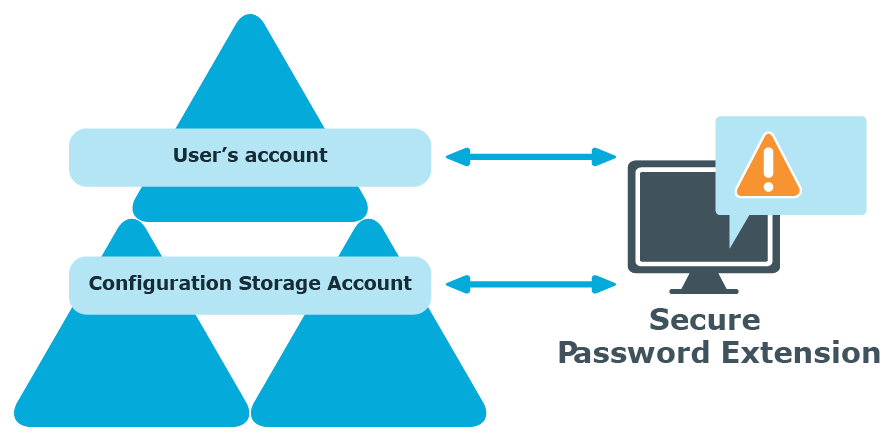Every Password Manager instance publishes its service connection points in Active Directory. Secure Password Extension uses service connection points to automatically locate the Self-Service Site.
Service connection points are objects in Active Directory that hold information about services. Services can publish information about their existence by creating service connection points in Active Directory. Client applications use this information to find and connect to instances of the service. When an instance of Password Manager is installed, the Password Manager Service publishes its service connection points in Active Directory. To locate the server where the Self-Service Site is deployed, Secure Password Extension uses the service connection points published by Password Manager Service instances in Active Directory.
-
Password Manager instance publishes a service connection point in Active Directory.
-
Secure Password Extension locates the service connection point.
-
Secure Password Extension obtains the necessary data from the service connection point (URL path to the Self-Service Site).
-
Secure Password Extension opens the Self-Service Site.


